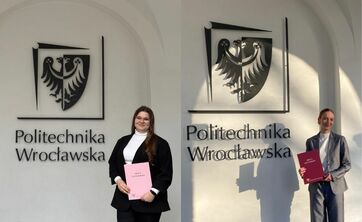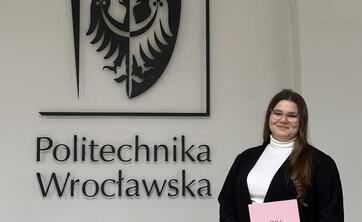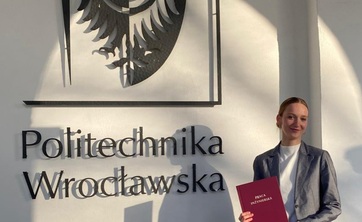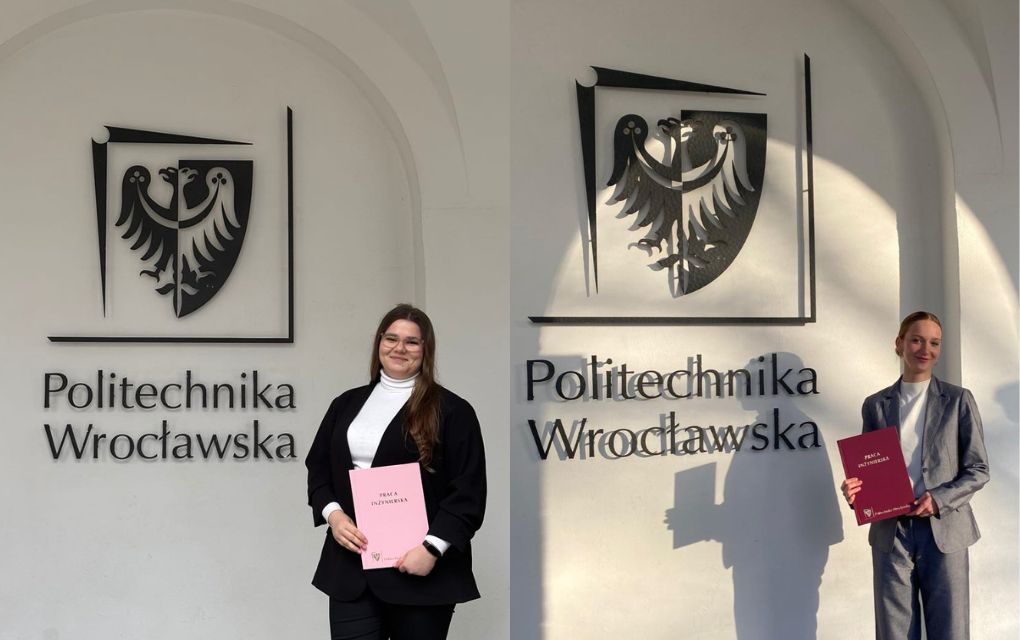 Weronika Domczewska from our Faculty won the main prize in the competition for the best engineering or bachelor's thesis organised by the Polish Bioinformatics Society. It recognizes dissertations on topics related to biology, biochemistry, biophysics, medical sciences, or agricultural sciences that include a significant computational element. The competition jury also honourably mentioned Marta Skowron, who is also our student. Congratulations!
Weronika Domczewska from our Faculty won the main prize in the competition for the best engineering or bachelor's thesis organised by the Polish Bioinformatics Society. It recognizes dissertations on topics related to biology, biochemistry, biophysics, medical sciences, or agricultural sciences that include a significant computational element. The competition jury also honourably mentioned Marta Skowron, who is also our student. Congratulations!
This year's competition has received 14 submissions. The committee, composed of scientists from several Polish universities, evaluated the significance and the formulation of the researched issue, the quality of the solution, and the practical aspect of the results, as well as the informative aspect of the thesis, the conciseness and clarity of the presentation, the editorial quality of the thesis, and efforts towards the dissemination of the results so far.
First step towards a model detecting the risk of dysautonomia in traumatic brain injury
The winner was the engineering thesis by Weronika Domczewska, titled "Design and implementation of an algorithm for identifying patterns in biomedical time series and their clustering in patients with acute brain injury", which was submitted and defended in our Faculty. The student's supervisor was Dr. Agnieszka Uryga from the Department of Biomedical Engineering at the Faculty of Fundamental Problems of Technology.
The work was part of the scientific project AUTOMATIC, funded under the "Sonata" program of the National Science Centre. The medical support for the project was provided by Małgorzata Burzyńska, MD, PhD., who works at the Department of Anaesthesiology and Intensive Therapy at the Medical University of Wrocław.
In her work, Weronika proposed a clustering algorithm that examined the relationship between the course of signals carrying information about cerebral hemodynamics and the autonomic nervous system in patients with traumatic brain injury in the context of the risk of dysautonomia and mortality.
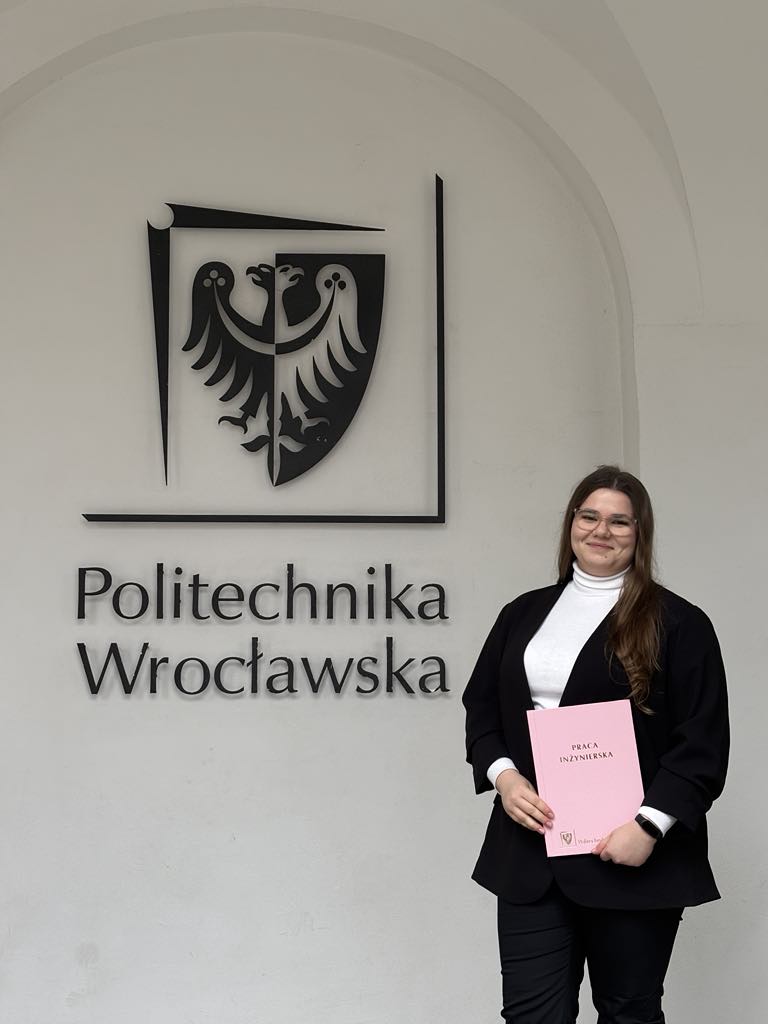
Dysautonomia is a type of neuropathy affecting the nerves that carry information from the brain and spinal cord to the heart, bladder, pupils, sweat glands, and blood vessels. It may manifest in various forms – for example, through digestive issues or difficulty maintaining a specific body position.
The author focused on the course of two signals – BRS, which is arterial baroreceptor sensitivity, and ICP, which is intracranial pressure.
She proposed selecting the optimal mathematical model in terms of minimising the mean square error from the family of Chebyshev orthogonal polynomials. Subsequently, she passed the representations of selected mathematical models – vector and numerical – to the k-means and hierarchical clustering algorithms. She compared the obtained groups with data on mortality and the likelihood of dysautonomia in the studied patients.
– I demonstrated that there is a certain relationship between the polynomial representation of the averaged ICP signal and BRS and the probability of the occurrence of dysautonomia – says Weronika.
However, she notes that further analysis would require deeper investigation and work with a larger dataset (for example, data from multi-centre studies). The research could also include simulation studies that would allow finding optimal parameters for orthogonal models, as well as an attempt to combine information derived from different types of signals. Data derived from the algorithm could also support efforts to develop a model for the automated detection of dysautonomia risk.
Peptide design model
The jury also decided to award a distinction – also to our student. Marta Skowron was appreciated for her engineering thesis "Designing Amyloidogenic Peptides Using Neural Networks". Her supervisor was Prof. Witold Dyrka from the Department of Biomedical Engineering at the Faculty of Fundamental Problems of Technology.
In her work, Marta focused on the application of artificial intelligence to the design of amyloid peptides.
She explains that designing them with strictly defined properties allows a better control of their aggregation and the formation of amyloid structures. “As a result, it is possible to design stable, functional biomaterials with predictable properties,” she explains. “In the context of, for example, neurodegenerative diseases, such control may (although this is currently only a hypothesis) lead to a better understanding of the mechanisms of pathological amyloid formation.
Amyloids are proteins that assume an abnormal spatial arrangement and combine into stable, mostly biologically inactive structures. The accumulation of such proteins in the human body leads to pathologies that contribute to certain diseases, including Alzheimer's disease, Parkinson's disease, type II diabetes, multiple sclerosis, and some cancers.
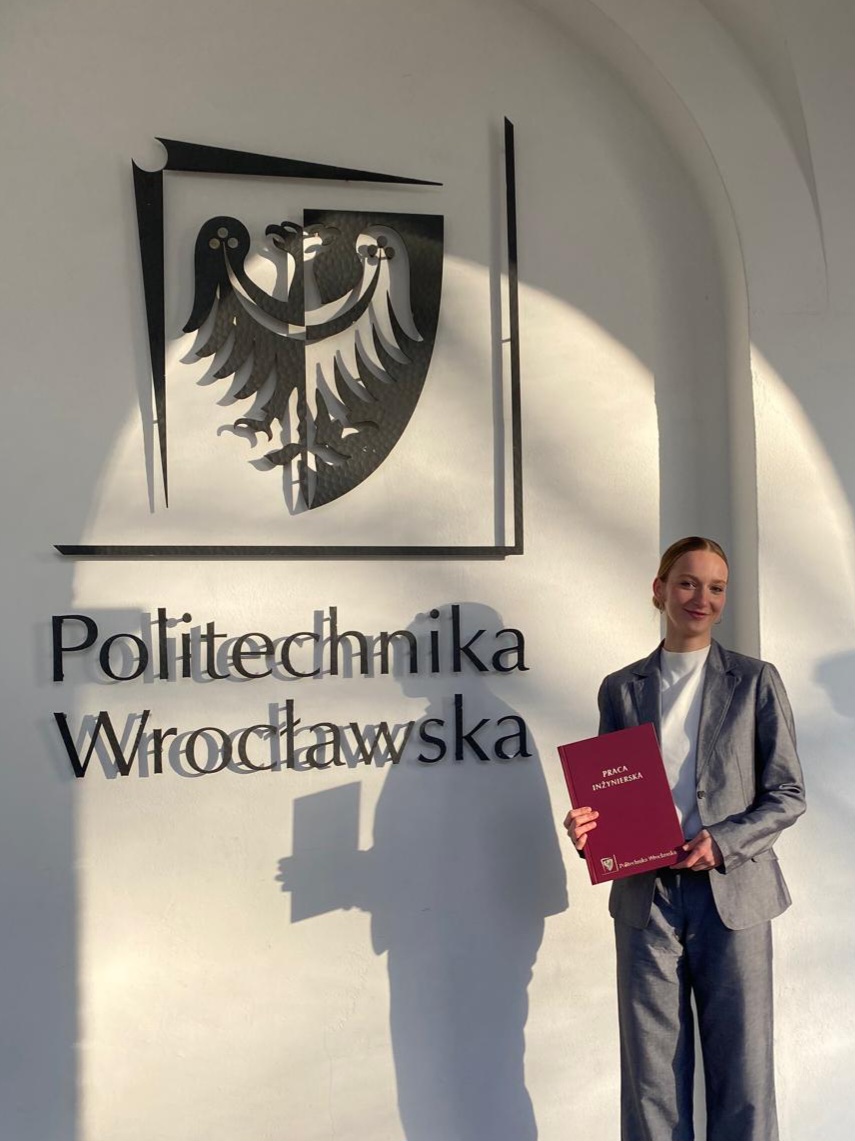
– For a peptide to be able to "fold" into an amyloid structure, it must have the appropriate physicochemical properties. We want to modify these features in order to consciously design peptides that, on the one hand, can form stable amyloid structures (meaning they will "act" like amyloids), and on the other hand, will be safer, more functional, or tailored for specific applications, such as a biomaterial – explains the author of the work. – It’s a difficult task because, to effectively control such processes, you first need to understand them well, and at the same time, by controlling them, we hope to understand them better.
As Marta adds, although it is still a distant prospect, developing tools for designing amyloid peptides in such a way that their sequences can be modified in a controlled manner, may bring us closer to answering key questions related to these neurodegenerative diseases.
In her work, the student proposed an original model for modifying peptide sequences by extending the pre-trained language model ProtBERT with a layer of additional physicochemical features. She also conducted a series of experiments evaluating the effectiveness of this model. She utilized various evaluation metrics, which allowed an accurate analysis of the generated sequences.
– My experiments, despite certain limitations, provide a solid foundation for the further development of the tool. The results confirm the potential of using neural networks based on transformer architecture to predict the properties of amyloidogenic peptides. However, further work on optimising the model and diversifying the data sets is necessary – the author emphasises.
Both authors of the award-winning engineering theses are currently students of Trusted Artificial Intelligence at our Faculty.
